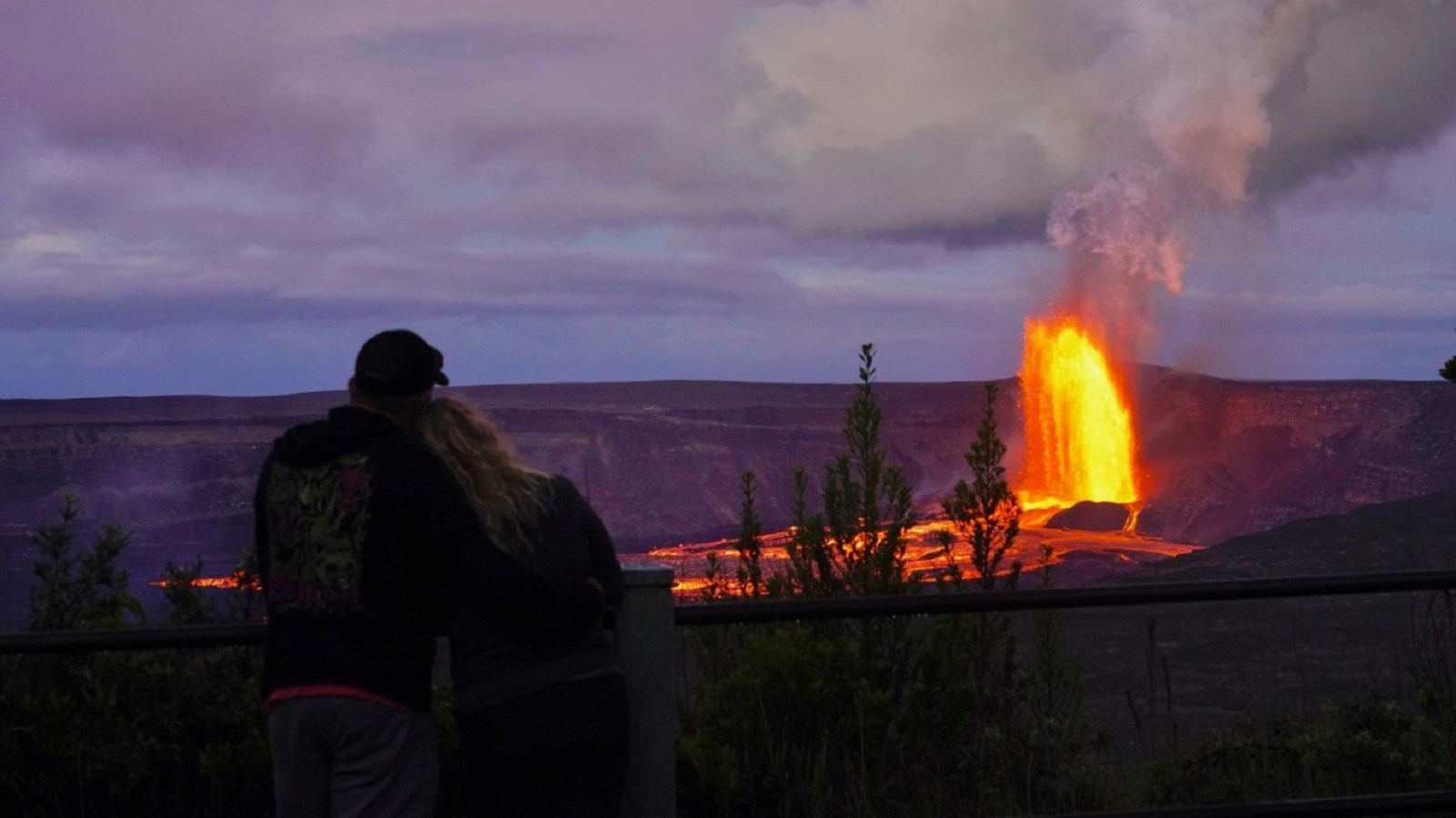Last updated: June 20, 2025
Place
Eruption Viewing near Welcome Center

NPS Photo
Accessible Rooms, Cellular Signal, Information, Information - Maps Available, Information - Ranger/Staff Member Present, Information Kiosk/Bulletin Board, Parking - Auto, Parking - Bus/RV, Picnic Table, Restroom, Restroom - Accessible, Scenic View/Photo Spot, Trailhead
Although lava may be visible within the national park, conditions can change at any time. The USGS Hawaiian Volcano Observatory issues volcano updates for Kīlauea (external link).
The Welcome Center is recommended as a first stop. The overlooks across Crater Rim Drive from the Welcome Center at Kilauea Military Camp offer excellent views of the eruption from the caldera rim. Walk the path across the Kilauea Military Camp lawn, past the large flagpole and carefully cross Crater Rim Drive at the crosswalk to enter the forest. Turn left at the trailhead onto Crater Rim Trail towards Steam Vents at Kūkamāhuākea. Continue walking through the forest for a short distance and down a slight incline (26-ft. elevation change) to the first overlook on the right.
Park entrance fees apply. No reservations needed.
Where to park: Follow the signs to the Welcome Center. Do not park in Kilauea Military Camp guest parking.
Walking distance: Six minutes (0.27 mile), one-way from the ball field parking lot to the closest and largest overlook.
Views: The erupting vents, caldera and summit crater are visible from overlooks in this area.
Amenities: Ample parking (about 100 stalls total), portable restrooms; information, park store and park rangers available from 9 a.m. to 4:45 p.m. daily. Safety: Do not approach cliff edges or go into closed areas, stay on trail and behind safety railing and ropes at all times.
What to Bring for Viewing the Eruption:
- Headlamp or flashlight (for night visits)
- Sturdy, closed-toe shoes (for uneven terrain)
- Warm clothes (it can get chilly, especially at night)
- Rain jacket or poncho (weather can change quickly)
- Glasses and a hat (to protect you from volcanic ash)
- Water bottle (stay hydrated)
- Snacks (for energy)
- Camera or smartphone (for photos, but be aware of your surroundings)
- Sunscreen (even on cloudy days)
- Binoculars (for a closer view of the eruption)
- First aid kit or medications (just in case)
- Park map (for navigation and safety)
